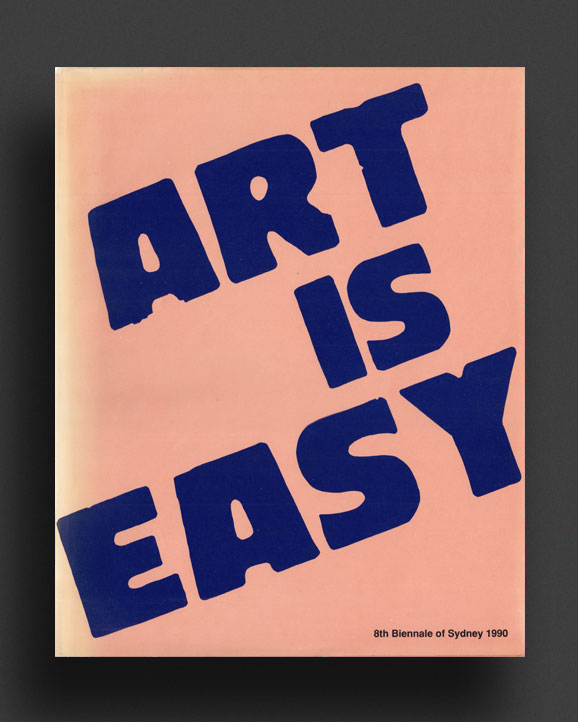(...less)
The long out-of-print heavyweight "Out of Actions" book (First German hardcover edition) that was published to accompany the spectacular 1998 Paul Schimmel-curated travelling exhibition. "Out of Actions" surveyed the broad international history and influence of post-war Performance Art, and the objects that exist today as its documentation. It features significant texts by Schimmel, Kristine Stiles, Guy Brett, Hubert Klocker, Shinichiro Osaki, Leslie King-Hammond and Lowery Stokes Sims, and Keiko Okamura.
This important and heavily researched document is lavishly illustrated throughout in colour and black and white, capturing the work and actions of the artists featured in the exhibition and essays: Marina Abramovic, Marina Abramovic and Ulay, Vito Acconci, Genpei Akasegawa, Laurie Anderson, Eleanor Antin, Rasheed Arseen, Mowry Baden, Artur Barrio, Joseph Beuys, Mark Boyle and Joan Hills, George Brecht, Stuart Brisley, Robert Delford Brown, Gunter Brus, Chris Burden, James Lee Byars, John Cage, Marc Camille Chaimowicz, Lygia Clark, Pinchas Cohen Gan, Collective Action Group, Houston Conwill, Paul Cotton, COUM Transmissions, Guy de Cointet, Jim Dine, John Duncan, Felipe Ehrenberg, Roberto Evangelista, Valie Export, Robert Filliou, Rose Finn-Kelcey, Sherman Fleming, Lucio Fontana, Terry Fox, Howard Fried, Gideon Gechtman, Gilbert & George, Alberto Greco, Ion Grigorescu, Victor Grippo, Red Grooms, Guerrilla Art Action Group, David Hammons, Al Hansen, Maren Hassinger, Lynn Hershman, Dick Higgins, Tatsumi Hijikata, Susan Hiller, Rebecca Horn, Tehching Hsieh, Joan Jonas, Kim Jones, Michel Journiac, Akira Kanayama, Tadeusz Kantor, Allan Kaprow, Mike Kelley, Juergen Klauke, Yves Klein, Milan Knizak, Alison Knowles, Komar & Melamid, Jannis Kounellis, Shigeko Kubota, Tetsumi Kudo, Yayoi Kusama, Leslie Labowitz, Suzanne Lacy, John Latham, Jean-Jacques Lebel, Lea Lublin, George Maciunas, Leopoldo Maier, Piero Manzoni, Tom Marioni, Georges Mathieu, Gordon Matta-Clark, Paul McCarthy, Bruce McLean, David Medalla, Cildo Meireles, Ana Mendieta, Gustav Metzger, Marta Minujin, Jan Micoch, Linda Montano, Robert Morris, Otto Muehl, Saburo Murakami, Natsuyuki Nakanishi, Bruce Nauman, Paul Neagu, Senga Nengudi, Joshua Neustein, Hermann Nitsch, Helio Oiticica, Claes Oldenburg, Yoko Ono, Orlan, Raphael Montanez Ortiz, Lorenzo Pace, Nam June Paik, Gina Pane, Lygia Pape, Giuseppe Pinot Gallizio, Adrian Piper, Michelangelo Pistoletto, Jackson Pollock, William Pope L., Robert Rauschenberg, Carlyle Reedy, Klaus Rinke, Ulrike Rosenbach, Dieter Roth, Zorka Saglova, Niki de Saint Phalle, Alfons Schilling, Tomas Schmit, Carolee Schneemann, Rudolf Schwarzkogler, Bonnie Sherk, Shozo Shimamoto, Ushio Shinohara, Kazuo Shiraga, Barbara T. Smith, Daniel Spoerri, Petr Stembera, Wolfgang Stoerchle, Jiro Takamatsu, Atsuko Tanaka, Mark Thompson, Jean Tinguely, Rasa Todosijevic, Kerry Trengove, Ulay, Ben Vautier, Wolf Vostell, Franz Erhard Walther, Peter Weibel, Franz West, Hannah Wilke, Emmett Williams, and Zaj.
Scarce first German edition, published by Hatje Cantz.
File under:
Niki de Saint-Phalle
Cosey Fanni Tutti
Vito Acconci
Genpei Akasegawa
Laurie Anderson
Eleanor Antin
Rasheed Arseen
Mowry Baden
Artur Barrio
Joseph Beuys
Mark Boyle
Joan Hills
George Brecht
Stuart Brisley
Robert Delford Brown
Chris Burden
James Lee Byars
John Cage
Marc Camille Chaimowicz
Lygia Clark
Pinchas Cohen Gan
Collective Action Group
Houston Conwill
Paul Cotton
COUM Transmissions
Guy de Cointet
Jim Dine
John Duncan
Felipe Ehrenberg
Roberto Evangelista
Valie Export
Robert Filliou
Rose Finn-Kelcey
Sherman Fleming
Lucio Fontana
Terry Fox
Howard Fried
Gideon Gechtman
Alberto Greco
Ion Grigorescu
Victor Grippo
Red Grooms
Guerrilla Art Action Group
David Hammons
Al Hansen
Maren Hassinger
Lynn Hershman
Dick Higgins
Tatsumi Hijikata
Susan Hiller
Rebecca Horn
Tehching Hsieh
Joan Jonas
Kim Jones
Michel Journiac
Akira Kanayama
Tadeusz Kantor
Allan Kaprow
Mike Kelley
Yves Klein
Milan Knizak
Alison Knowles
Komar & Melamid
Jannis Kounellis
Shigeko Kubota
Tetsumi Kudo
Yayoi Kusama
Leslie Labowitz
Suzanne Lacy
John Latham
Jean-Jacques Lebel
Lea Lublin
George Maciunas
Leopoldo Maier
Piero Manzoni
Tom Marioni
Georges Mathieu
Gordon Matta-Clark
Paul McCarthy
Bruce McLean
David Medalla
Cildo Meireles
Ana Mendieta
Gustav Metzger
Jan Micoch
Linda Montano
Robert Morris
Otto Muehl
Saburo Murakami
Natsuyuki Nakanishi
Bruce Nauman
Paul Neagu
Senga Nengudi
Joshua Neustein
Hermann Nitsch
Claes Oldenburg
Yoko Ono
Orlan
Raphael Montanez Ortiz
Lorenzo Pace
Nam June Paik
Gina Pane
Lygia Pape
Giuseppe Pinot Gallizio
Adrian Piper
Michelangelo Pistoletto
Jackson Pollock
William Pope L.
Robert Rauschenberg
Carlyle Reedy
Klaus Rinke
Ulrike Rosenbach
Dieter Roth
Zorka Saglova
Alfons Schilling
Tomas Schmit
Carolee Schneemann
Rudolf Schwarzkogler
Bonnie Sherk
Shozo Shimamoto
Ushio Shinohara
Kazuo Shiraga
Barbara T. Smith
Daniel Spoerri
Petr Stembera
Wolfgang Stoerchle
Jiro Takamatsu
Atsuko Tanaka
Mark Thompson
Jean Tinguely
Rasa Todosijevic
Kerry Trengove
Ulay
Ben Vautier
Wolf Vostell
Franz Erhard Walther
Peter Weibel
Franz West
Hannah Wilke
Emmett Williams
Zaj
Marina Abramovič
Günter Brus
Gilbert & George
Jürgen Klauke
Marta Minujín
Hélio Oiticica
Paul Schimmel
Kristine Stiles
Guy Brett
Hubert Klocker
Shinichiro Osaki
Leslie King-Hammond
Lowery Stokes Sims
Keiko Okamura
Hatje Cantz / Berlin
Performance / Dance / Theater
Sculpture / Installation
Painting
Arte Povera
Minimal Art
Feminism
Art
Dada
Film / Video
Fluxus
Group Shows / Collections
Out-of-print / Rare
Pop Art
Sound / Music
Photography
Nouveau Réalisme / Zero / Kinetic






























































































































































